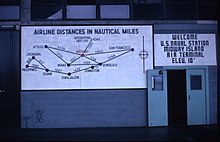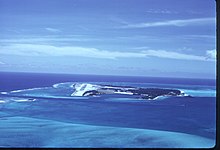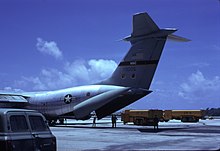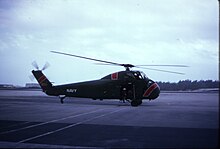
Midway Atoll is a 2.4 sq mi (6.2 km2) atoll in the North Pacific Ocean. Midway Atoll is an insular area of the United States and is an unorganized and unincorporated territory. The largest island is Sand Island, which has housing and an airstrip. Immediately to the east of Sand Island across the narrow Brooks Channel is Eastern Island, which is uninhabited and no longer has any facilities. Forming a rough, incomplete circle around the two main islands and creating Midway Lagoon is Spit Island, a narrow reef.

Naval Air Station Whidbey Island (NASWI) is a naval air station of the United States Navy located on two pieces of land near Oak Harbor, on Whidbey Island, in Island County, Washington.

A naval air station is a military air base, and consists of a permanent land-based operations locations for the military aviation division of the relevant branch of a navy. These bases are typically populated by squadrons, groups or wings, their various support commands, and other tenant commands.
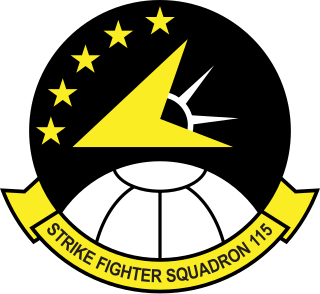
Strike Fighter Squadron 115 (VFA-115) is known as the "Eagles", callsign "Talon", a United States Navy F/A-18E Super Hornet strike fighter squadron stationed at Marine Corps Air Station Iwakuni. Their tail code is NF. It was established as Torpedo Squadron VT-11 on 10 October 1942, redesignated VA-12A on 15 November 1946, VA-115 on 15 July 1948, then finally VFA-115.
A Patrol Wing (PatWing) was a United States Navy aviation unit with the commander of a Patrol Wing known as the Commodore, the ComPatWing or COMPATWING. From 1 November 1942 to 30 June 1973 Patrol Wings were designated "Fleet Air Wings". On 26 March 1999 all then existing Pacific Fleet Patrol Wings were redesignated Patrol and Reconnaissance Wings and on 1 June 1999 all then existing Atlantic Fleet Patrol Wings were redesigned Patrol and Reconnaissance Wings with the Commodore designated as COMPATRECONWING or ComPatReconWing.

Patrol Squadron 47 (VP-47), also known as "The Golden Swordsmen", is a maritime patrol squadron of the United States Navy based at Naval Air Station Whidbey Island, Washington (USA), attached to Patrol and Reconnaissance Wing 10. The squadron currently flies the Boeing P-8A Poseidon.

Patrol Squadron Four (VP-4) is a U.S. Navy land-based patrol squadron based at the Naval Air Station Whidbey Island, Oak Harbor, Washington, which is tasked to undertake maritime patrol, anti-submarine warfare (ASW), and intelligence, surveillance and reconnaissance (ISR) missions flying the Boeing P-8 Poseidon.
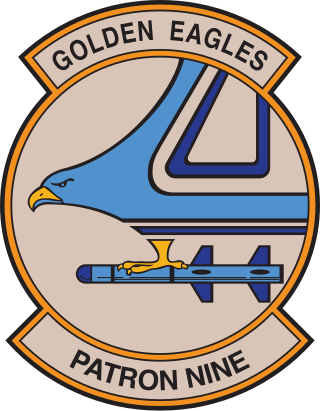
Patrol Squadron 9 (VP-9) is a U.S. Navy patrol squadron with its homeport located at Naval Air Station Whidbey Island. As of 2018, VP-9 is part of Patrol and Reconnaissance Wing Ten, Commander, Naval Air Forces, Pacific.

VP-17, nicknamed the White Lightnings, was a Patrol Squadron of the U.S. Navy.

VP-6 was a long-lived Patrol Squadron of the U.S. Navy, nicknamed the Blue Sharks. Originally established as Bombing Squadron VB-146 on 15 July 1943, it was redesignated Patrol Bombing Squadron VPB-146 on 1 October 1944, redesignated VP-146 on 15 May 1946, redesignated Medium Patrol Squadron (Landplane) VP-ML-6 on 15 November 1946, redesignated VP-6 on 1 September 1948 and disestablished on 31 May 1993. It was the third squadron to be designated VP-6, the first VP-6 was disestablished on 3 May 1926 and the second VP-6 was disestablished on 20 June 1945.
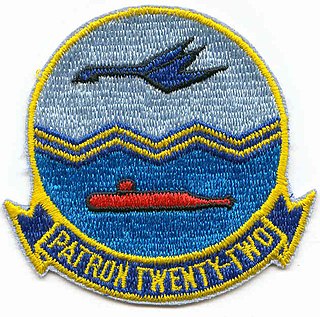
VP-22 was a long-lived Patrol Squadron of the U.S. Navy, nicknamed the Dragons from 1944 to 1950, and the Blue Geese from 1951 to 1994. It was established as Bombing Squadron VB-102 on 15 February 1943, redesignated Patrol Bombing Squadron VPB-102 on 1 October 1944, redesignated VP-102 on 15 May 1946, redesignated Heavy Patrol Squadron (Landplane) VP-HL-2 on 15 November 1946, redesignated VP-22 on 1 September 1948 and disestablished on 31 March 1994. It was the third squadron to be designated VP-22, the first VP-22 was disestablished, merged with VP-101 on 18 April 1942 and the second VP-22 was redesignated VPB-22 on 1 October 1944.

VP-48 was a long-lived Patrol Squadron of the U.S. Navy, nicknamed the Boomerangers from 1975 to 1980, and the Boomers from 1981 to 1991. It was established as Reserve Patrol Squadron VP-905 in May 1946, redesignated Heavy Patrol Squadron (Landplane) VP-HL-51 on 15 November 1946, redesignated VP-731 in February 1950, redesignated VP-48 on 4 February 1953 and disestablished on 23 May 1991. It was the second squadron to be designated VP-48, the first VP-48 was disestablished on 31 December 1949.

VPB-23 was a patrol bombing squadron of the U.S. Navy. The squadron was established as Patrol Squadron 10-S (VP-10S) on 1 July 1930, redesignated Patrol Squadron 10-F (VP-10F) on 17 July 1933, redesignated Patrol Squadron 10 (VP-10) on 1 October 1937, redesignated Patrol Squadron 25 (VP-25) on 1 July 1939, redesignated Patrol Squadron 23 (VP-23) on 1 August 1941, redesignated Patrol Bombing Squadron 23 (VPB-23) on 1 October 1944 and disestablished on 25 January 1946.
VPB-24 was a Patrol Bombing Squadron of the U.S. Navy. The squadron was established as Patrol Squadron 9-S (VP-9S) on 7 January 1930, redesignated Patrol Squadron 9-B (VP-9B) on 1 October 1930, redesignated Patrol Squadron 9-F (VP-9F) on 26 October 1931, redesignated Patrol Squadron 9 (VP-9) on 1 October 1937, redesignated Patrol Squadron 12 (VP-12) on 1 July 1939, redesignated Patrol Squadron 24 (VP-24) on 1 August 1941, redesignated Patrol Bombing Squadron 24 (VPB-24) on 1 October 1944 and disestablished on 20 June 1945.
VP-20 was a Patrol Squadron of the U.S. Navy. The squadron was established as Patrol Squadron 8-S (VP-8S) from elements of VT-9S on 1 July 1929, redesignated Patrol Squadron 8-F (VP-8F) on 3 April 1933, redesignated Patrol Squadron 8 (VP-8) on 1 October 1937, redesignated Patrol Squadron 24 (VP-24) on 1 July 1939, redesignated Patrol Squadron 12 (VP-12) on 1 August 1941, redesignated Patrol Bombing Squadron 120 (VPB-120) on 1 October 1944, redesignated Patrol Squadron 120 (VP-120) on 15 May 1946, redesignated Heavy Patrol Squadron (Landplane) 10 (VP-HL-10) on 15 November 1946, redesignated Patrol Squadron 20 (VP-20) on 1 September 1948 and disestablished on 31 March 1949. It was the third squadron to be designated VP-20, the first VP-20 was redesignated VP-44 on 1 July 1940 and the second VP-20 was redesignated VPB-20 on 1 October 1944.

VP-42 was a Patrol Squadron of the U.S. Navy. The squadron was established as Patrol Squadron 22 (VP-22) on 7 April 1944, redesignated Patrol Bombing Squadron 22 (VPB-22) on 1 October 1944, redesignated Patrol Squadron 22 (VP-22) on 15 May 1946, redesignated Medium Patrol Squadron (Seaplane) 2 (VP-MS-2) on 15 November 1946, redesignated Patrol Squadron 42 (VP-42) on 1 September 1948 and disestablished on 26 September 1969.
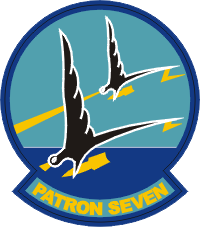
VP-7 was a Patrol Squadron of the U.S. Navy. The squadron was established as Bombing Squadron 119 (VB-119) on 15 August 1944, redesignated Patrol Bombing Squadron 119 (VPB-119) on 1 October 1944, redesignated Patrol Squadron 119 (VP-119) on 15 May 1946, redesignated Heavy Patrol Squadron (Landplane) 9 (VP-HL-9) on 15 November 1946, redesignated Medium Patrol Squadron (Landplane) 7 (VP-ML-7) on 25 June 1947, redesignated Patrol Squadron 7 (VP-7) on 1 September 1948 and disestablished on 8 October 1969. It was the second squadron to be designated VP-7, the first VP-7 was redesignated VP-11 on 1 July 1939.

VPB-11 was a Patrol Bombing Squadron of the U.S. Navy. The squadron was established as Torpedo & Bombing Squadron 19-D14 (VT-19D14) on 7 February 1924, redesignated Torpedo & Bombing Squadron 6D14 (VT-6D14) on 1 July 1927, redesignated Patrol Squadron 6-B (VP-6B) on 1 April 1931, redesignated Patrol Squadron 6-F (VP-6F) on 17 July 1933, redesignated Patrol Squadron 6 (VP-6) on 1 October 1937, redesignated Patrol Squadron 23 (VP-23) on 1 July 1939, redesignated Patrol Squadron 11 (VP-11) on 1 August 1941, redesignated Patrol Bombing Squadron 11 (VPB-11) on 1 October 1944 and disestablished on 20 June 1945.
VPB-197 was a Patrol Bombing Squadron of the U.S. Navy. The squadron was established as Patrol Squadron 21 (VP-21) on 1 September 1938, redesignated Patrol Squadron 45 (VP-45) on 1 July 1939, redesignated Patrol Squadron 14 (VP-14) on 1 December 1939, redesignated Patrol Squadron 26 (VP-26) on 15 April 1941, redesignated Patrol Squadron 14 (VP-14) on 1 July 1941, redesignated Patrol Bombing Squadron 14 (VPB-14) on 1 October 1944, redesignated Patrol Bombing Squadron 197 (VPB-197) on 2 December 1944 and disestablished on 1 April 1946.
VPB-44 was a Patrol Bombing Squadron of the U.S. Navy. The squadron was established as Patrol Squadron 44 (VP-44) on 3 June 1941, redesignated Patrol Bombing Squadron 44 (VPB-44) on 1 October 1944 and disestablished on 20 June 1945.


